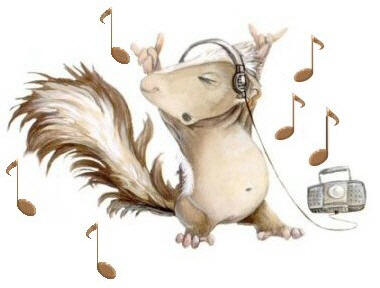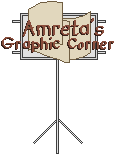Home Syllabus Course Outline Elementary Music Links Music Dept. Links | DME BULLETIN BOARD ASSIGNMENT Each student will assemble an interactive bulletin board and demonstrate the musical concept in a short lesson. 
Texas Music TEKS
Grading Criteria  | accuracy of the concept content |  | appropriateness of the concept level for the grade selected |  | neatness/attractiveness |  | clarity of the concept content |  | ability to easily see lettering, notes, objects on the board from any student seat |  | your lesson demonstration |  | assignment logistics (up on time, down on time and materials cleaned up) |

Bulletin Board Rubric Criteria | Performance Indicators | Failing | Needs improvement | Acceptable | Good | Excellent | Layout, Design, Mechanics | 0 points | Object size, neatness, accessibility, safety, interesting appearance needs improvement 21 points | Acceptable object size, neatness, accessibility, safety, and interesting appearance 24 points | Good object size, neatness, accessibility, safety, and interesting appearance 27 points | Excellent object size, neatness, accessibility, safety, and interesting appearance 30 points | Lesson | 0 points | Instructions, teaching of the concept, engaging students needs improvement 21 points | Acceptable instructions, teaching of the concept, with students engaged 24 points | Good instructions, teaching of the concept, with students engaged 27 points | Excellent instructions, teaching of the concept, with students engaged 30 points | Concept | 0 points | Age range incorrect and/or multiple errors 14 points | Age range incorrect and/or several errors 16 points | Age range questionable and/or minor errors 18 points | Age appropriate and all concept and presentation elements correct 20 points | Interactivity | 0 points | Not enough interactivity for individual, corporate, or non-directed instruction 7 points | Acceptable interactivity for individual, corporate, or non-directed instruction 8 points | Good interactivity for individual, corporate, or non-directed instruction 9 points | Excellent interactivity for individual, corporate, or non-directed instruction 10 points | Flexibility | 0 points | Needs work to be used for other levels, other concepts, and for self-direction 7 points | Acceptable for other levels, other concepts, and for self-direction 8 points | Good for other levels, other concepts, and for self-direction 9 points | Excellent for other levels, other concepts, and for self-direction 10 points | Total points | 0 | 70 | 80 | 90 | 100 |
|
Procedure  | Choose a theme for your bulletin board. It must include elements that you can use to teach a lesson and it should be interactive (involving some sort of response or activity from the children). Choose a grade level focus for your lesson. If you need ideas, there is a notebook in my office containing bulletin board ideas. You can also find ideas on the internet at sites such as www.musicbulletinboards.net, the idea bank at MusicK8.com or the bulletin board section in the Music Ed Resources Idea Library. There are many others.
Do not repeat the same idea that someone in your class has already used. |
 | Get approval for your bulletin board idea 1 week prior to your assignment date. Use the approval form here. Also required on the form is a drawing or representation of what your bulletin board will look like. Using color on your drawing is helpful. Failure to check off your bulletin board on time will drop your grade by one letter. |
 | Gather your supplies. The size of the bulletin board will be 4 x 6.
You may purchase supplies or reuse leftover supplies. The best local resource for borders and other bulletin board elements is The Apple Tree. Students have used both paper and fabric for the bulletin board background and both work well. Borders can be purchased or can be made (for example, hearts or geometric shapes cut from construction paper can be lined up overlapping around the edge of the bulletin board).
For construction ideas, see Pinterest. |
 | Put your bulletin board up prior to the beginning of the class period on the day it is due. Failure to complete the project prior to the beginning of the class will affect the grade. If the assembly is not complete by the beginning of the class, the assignment will be considered late. |
 | Lead the class in a lesson demonstrating the interactive nature of your bulletin board on the date assigned to you. This demonstration/lesson should only take 5-10 minutes. It is not necessary to draw the lesson to its conclusion, but just to demonstrate how the bulletin board would be used. You should specify the grade level you are teaching to and will be responsible for your lesson being age-appropriate. Also mention, if applicable, any potential application for other concepts and/or grade levels. |
 | Provide a handout (with holes punched) of a copy of your bulletin board form with a photograph of the bulletin board for each class member to be distributed on the day of your presentation. Please email the photograph to me also at vjohnson@tarleton.edu Use the form here for your handout. (This is the same form as your approval form.) |
 | Take your bulletin board down before the next person needs to use that space. Failure to do so will affect your grade. When taking down bulletin boards, all staples should be removed and thrown away. Check the floor and pick up all staples as they cause a problem when the custodians vacuum the classroom. Properly dispose of all materials which are not reusable. |
 | Recycle or dispose of all materials. Leftover materials may be kept or donated to
someone. You may leave reusable materials on the shelf. If
they are not claimed in a reasonable amount of time, they will be thrown
away. |

National Standards for Music Education 1. Singing, alone and with others, a varied repertoire of music.
2. Performing on instruments, alone and with others, a varied repertoire of music.
3. Improvising melodies, variations, and accompaniments.
4. Composing and arranging music within specified guidelines.
5. Reading and notating music.
6. Listening to, analyzing, and describing music.
7. Evaluating music and music performances.
8. Understanding relationships between music, the other arts, and disciplines outside the arts.
9. Understanding music in relation to history and culture. |



